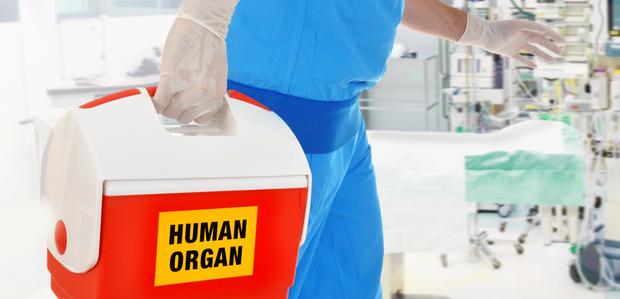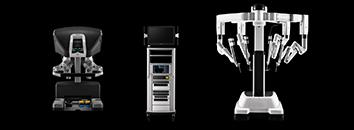Best Heart and Lung Transplant in India

A Heart-Lung Transplant is a major surgical procedure. It is used to treat people who have severe, or life-threatening, conditions that are affecting both their Heart and their Lungs, such as severe congenital heart disease (birth defects that affect the normal working of the heart).
A Heart-Lung Transplant is a complex and demanding procedure that carries a high risk of complications, some of which can be fatal. Therefore, a Heart-Lung Transplant is usually only performed when all other treatment options have been exhausted, and there is compelling evidence to suggest that the benefits of the transplant outweigh any risks.
Hearts are taken from brain-dead people. Although there is no activity in their brain, and they are legally dead, a ventilator can be used to keep their heart beating and oxygen circulating through their blood. However, the prolonged use of a ventilator can damage the lungs and make them unsuitable for transplant.
The second problem is that lung tissue rapidly deteriorates once it has been removed from the body. Therefore, a successful donation is only usually possible if the transplant is carried out within 4-6 hours of the lungs being removed from the donor.
The Heart and Lungs work in close partnership with each other. Healthcare professionals use the term ‘cardiothoracic’ to describe this partnership.
The partnership of the heart and lungs means they work together in the following way:
- the heart pumps oxygen-rich blood from the lungs to the rest of the body (the cells of the body)
- the body’s cells use oxygen for energy
- the oxygen-poor blood is then pumped back into the lungs
- the lungs supply the blood with more oxygen, and
- the process starts again
Due to the important partnership that exists between the heart and the lungs, any underlying problems with the heart can damage the lungs and vice versa. Therefore, to effectively treat certain health conditions, it is necessary to replace both organs.
Common Reasons for Heart-Lung Transplants
There are several different reasons why a Heart-Lung Transplant may be required. Some of the reasons are outlined below.
Congenital Heart Disease
Congenital heart disease is a condition where children are born with birth defects that affect their Hearts.
In some cases of congenital heart disease, damage to the heart means that the blood is pumped at a higher pressure than normal into the lungs. The excess pressure weakens the heart and damages the lungs.
In the most serious cases, the damage to the heart and lungs may be untreatable and a Heart-Lung Transplant will be required.
Primary pulmonary hypertension
Primary pulmonary hypertension is a rare condition where, for unknown reasons, the blood pressure within the lungs is much higher than usual. Over time, the excess pressure can weaken the heart and then damage the lungs.
Cystic fibrosis
In cases of cystic fibrosis, a thick sticky mucus develops inside the lungs which can damage them.
Cystic fibrosis can often be successfully treated using a lung transplant, but there may be some circumstances where if a donated set of heart and lungs are available, a Heart-Lung Transplant will be performed.
If the blood supply that connects the heart to the lungs becomes damaged, it is more likely that transplanting both the heart and the lungs will be successful.
There is also the additional benefit that the original heart, which is usually undamaged except for the nearby blood vessels, can be used as a transplant organ for somebody else. This is known as a ‘domino transplant’.
As a result of the lack of available donor organs, transplant teams have to assess potential recipients very carefully. They need to establish whether there are problems or factors, that may result in the donation proving unsuccessful. The outcome of the assessment may mean that the risks of a Heart-Lung Transplant outweigh the benefits.
Absolute contraindications
Absolute contraindications for a Heart-Lung Transplant include:
- being over 65 years of age and having another serious health condition
- having blood poisoning (septicaemia)
- having an incurable form of cancer
- currently misusing alcohol or drugs
- currently smoking, or
- having a mental health condition, such as schizophrenia, that means you are highly unlikely to comply with the treatment that will be required during the recovery period, such as taking immunosuppressant medication
Relative contraindications
Relative contraindications for a Heart-Lung Transplant include:
- having HIV
- having hepatitis B
- having hepatitis C
- being obese
- having severe diabetes that has caused damage to your organs, or
- having severe osteoporosis (brittle bones) – as many of the medications that are used in the recovery period can weaken bones, they are usually unsuitable for people with severe osteoporosis
Further assessment
As part of your assessment, you may have some of the tests that are described below.
- blood and urine tests – to check for viral or bacterial infections, as well as assessing the state of organs, such as your kidneys and liver
- chest X-rays
- blood pressure tests
- lung function test – where a machine called a pulse oximeter is used to measure the amount of oxygen that is in your blood
- computer tomography (CT) and magnetic resonance imaging (MRI) scans – which can be used to check the state of certain organs, such as your lungs
- coronary angiography – a special type of X-ray that can be used to study the inside of your heart
- electrocardiography (ECG) – a test that can measure the electrical activity of your heart
After the transplant
Following your Heart-Lung Transplant, it is likely that you will have to stay in the Intensive Care Unit (ICU) for several days. There are several reasons for this:
- Your new organs will be very vulnerable to infection immediately after the transplant, so you will need to stay in a sterile (germ-free) environment.
- There is a risk that your body may reject the heart and/or the lungs, which would require emergency treatment.
- You will require additional assistance with breathing and feeding until you begin to recover.
You will be given pain relief as required both at this stage (when you are less mobile) and as you recover and begin to move around the ward.
You will then usually be transferred to a general ward within 3 to 4 days where your health will continue to be monitored as you recover from the effects of the surgery. Most people will be well enough to leave the hospital within 3 weeks of having a Heart-Lung Transplant.
The recovery process
Recovering fully from a transplant is a long-term process. You may be referred to a physiotherapist so that you can take part in exercises that are specifically designed to strengthen your new heart and lungs. This is known as cardiopulmonary rehabilitation.
During your recovery period, you will need to attend regular check-ups so that the function of your new heart and lungs can be regularly monitored. You may need as many as 3 check-ups a week during the first few weeks after the transplant. These appointments will become less frequent if you make good progress.
After having a Heart-Lung Transplant, it may take several months before you are well enough to return to your normal daily activities.
Once you make a full recovery, you will still require regular check-ups on a long-term basis.
Immunosuppressants
After having a Heart-Lung Transplant, one of the biggest risks is that your immune system will regard the new heart and lungs as foreign objects and begin to attack them. This is known as rejection.
To prevent your new heart and lungs from being rejected, you will need to take medicines, known as immunosuppressants, to suppress your immune system. Immunosuppressants work by interfering with the normal activities of specialised white blood cells called T cells.
The immune system uses T cells to kill foreign cells, such as bacteria, viruses and, in the case of transplants, donated tissue, such as your new heart and lungs.
If you respond well to treatment, the doses of immunosuppressants may be lowered over the long term.
Immunosuppressants are powerful medicines that can have a range of different side effects. Possible side effects you may experience include:
- increased vulnerability to infection
- weakened bones (osteoporosis)
- muscle weakness
- nausea
- vomiting
- stomach ulcers
- blurred vision
- insomnia
- weight gain
- mood swings
- shaking of the hands
- acne
While these side effects may be troublesome, you should never stop or reduce the recommended dose of immunosuppressants, because if you do, it could lead to your heart and lungs being rejected.
The transplant centre may be able to provide additional treatments to help you cope better with any side effects that you experience after taking immunosuppressants.
Risks following a Heart-Lung Transplant
One of the biggest risks after having a Heart-Lung Transplant is that, despite taking immunosuppressants, your body will reject the new heart and lungs.
There are 2 types of rejection:
- acute rejection – where rejection occurs just after surgery
- chronic rejection – where rejection occurs many months or years after surgery
Signs that your body may be rejecting your heart include:
- fatigue
- swelling of your arms and legs
- weight gain
- a high temperature (fever) of above 38C (100.4F)
Signs that your body may be rejecting your lungs include:
- cough
- shortness of breath
- difficulties breathing
- a high temperature (fever) of above 38C (100.4F)
If you have any of these symptoms, you should contact the doctor as soon as possible.
Rejection can usually be treated by increasing the dose of your immunosuppressive medicines.
Infection
The immunosuppressant medicines will weaken your immune system making you more vulnerable to infection.
The 3 most common types of infection experienced by people who have undergone Heart-Lung Transplants are:
- bacterial infection
- fungal infections
- cytomegalovirus (CMV) infection
Preventing long-term infection
After having a Heart-Lung Transplant, you will likely need to take immunosuppressants for the rest of your life because you will be more vulnerable to infection. This means that you will have to take extra precautions that most people are not required to take. These include:
- avoiding crowds – if this is unavoidable, you should wear a face mask, particularly during the first year after your transplant
- avoiding close contact with anyone who is known to have an infection
- avoiding anything that could damage your lungs and make them more vulnerable to infection, such as smoke, chemical sprays or chemical fumes
- keeping your house very clean to prevent the spread of infection
Transplant success rate
Data shows that:
- 66% of people will survive for 1 year after receiving a Heart-Lung Transplant
- 63% of people will survive for 2 years after receiving a Heart-Lung Transplant
- 47% of people will survive for 5 years after receiving a Heart-Lung Transplant
- 36% of people will survive for 10 years after receiving a Heart-Lung Transplant
Heart Transplant
A heart transplant is surgery to remove the diseased heart from a person and replace it with a healthy one from an organ donor (deceased).
A heart transplant is required in End-stage heart failure a disease in which the heart muscle is failing severely in its attempt to pump blood through the body. It means other treatments are no longer working. End-stage heart failure is the final stage of heart failure. Despite its name, a diagnosis of heart failure does not mean the heart is about to stop beating. The term failure means the heart muscle is failing to pump blood normally because it is damaged very weak, or both.
Not everyone is a candidate for a heart transplant. Because of the wide range of information needed to know if a person is eligible for a transplant, a transplant team will review the evaluation.
Transplant may be indicated in the following cardiac diseases:
Heart Failure
The heart is the strongest muscle in the body. In a day it beats about 100, 000 times, and in a lifetime of about 70 years, the heart beats about 2.5 billion times! Quite hard work!
The heart and the network of blood vessels do a magnificent job of supplying blood to all the organs of the body. The continuous rhythmic contraction and relaxation of the heart help in the circulation of blood, thereby delivering oxygen, and nutrients to various tissues. Sometimes, progressive damage to the heart may result in declined function of the heart. As a result, the amount of blood circulated to various organs is reduced. This condition is termed as heart failure.
Your entire body’s function depends on the circulation of blood that delivers oxygen and nutrients to various tissues.
Cause of the failing heart
Coronary heart disease, a condition where the arteries carrying blood to the heart narrow by fat deposition, may be a reason for heart failure. Due to the fat deposition in the arteries, the blood supply to the heart is reduced considerably, which is enough only to keep the heart muscle alive, but not enough to carry out normal function. A previous heart attack that has left behind damaged heart muscle may also result in poor heart function.
If you have high blood pressure, the heart has to work extremely hard to pump blood throughout your body. Over time, this results in the thickening and weakening of heart muscle, eventually, the heart loses its ability to pump effectively.
A defective heart valve due to coronary heart disease, heart defect or heart infection forces the heart to work hard to pump blood. These may result in the weakening of heart muscles.
Other causes that may result in heart failure are myocarditis, a viral infection resulting in inflammation of the heart, structural heart defects from birth and abnormal rhythm of the heartbeat resulting in a too-fast heartbeat that increases the work of the heart.
Symptoms of heart failure
Heart failure can be progressive (chronic) or can be sudden (acute). A few signs and symptoms of heart attack are:
- Swelling of legs and ankles
- Discomfort in arms or chest (Angina) due to blockage of coronary artery
- Either weight gain or weight loss
- Shortness of breath
- Fatigue
- Loss of appetite
- Fast and irregular heartbeat
- Unable to do daily activities
- Persistent cough or wheezing with blooded phlegm
- Abdomen swelling
These symptoms and signs of a heart attack may worsen as the heart becomes weaker, you may feel tired and experience shortness of breath quite often or even when you walk across the rooms.
Diagnosing heart failure
Your doctor may be able to diagnose heart failure through your physical examinations and diagnostic tests. Your physician will check your heartbeat, and lungs sound and will look for swollen legs, ankles, feet and abdomen. Your blood pressure will be measured and your weight will be noted down.
The physician may ask you to get various tests. X-ray study of the chest gives a detailed picture of the heart, lungs, and blood vessels. Your physician will look at whether your heart is enlarged or there is fluid accumulation around your lungs.
An echocardiogram may be prescribed to know the pumping action of the heart. An ECG or electrocardiogram would be done to measure the electrical activity of your heart; this checks the rhythmic activity and enlargement of the heart or prior history of heart attack. ECG is also recorded while you are working on a treadmill for a given period. Your physician will check whether symptoms are elevated while doing activity.
A test with radioactive tracers can be done. Radioactive tracers are injected intravenously into your blood and its movement in the heart is tracked. This helps in knowing the size of the chamber of the heart, the amount of blood ejected from the heart and blood flow to regions of heart muscles.
In addition, a catheter can be inserted into the artery of your leg and directed to the region of the heart via X-ray guidance. This helps to see the chambers of the heart and to measure the pressure inside the heart. This visualization is called angiography
Various blood tests may also be done to check the function of your kidney and thyroid and to detect the presence of risk factors that can cause heart disease
Heart transplant surgery requires a hospital stay of 7 to 14 days, or even longer.
Lung Transplant
A Lung Transplant (also known as a Pulmonary Transplant) is a procedure where either one or both Lungs of the patient are diseased or damaged and do not respond to other treatments and hence are replaced with a donor’s (usually deceased) healthy Lungs.
While a Lung Transplant is a major operation that can involve many complications, it can greatly improve your health and quality of life.
There are 3 main types of Lung Transplant:
- Single Lung Transplant. Your healthcare providers will remove one of your diseased or damaged lungs and replace it with a donated lung.
- Double Lung Transplant. Your healthcare providers will remove both of your lungs and replace them with donated lungs.
- Heart-Lung Transplant. Your healthcare providers will remove your heart and both of your lungs and replace them with a donated heart and lungs.
Who is a good candidate to have a Lung Transplant?
In general, you’re a good candidate for a lung transplant if:
- You have a condition or disease that prevents your lungs from working properly.
- Your lungs haven’t responded to medications or other treatments.
- You have a life expectancy of fewer than one to three years if you don’t get a transplant.
- You don’t have lung cancer.
- You don’t use tobacco products.
- You’re able to take immunosuppressive drugs.
Why is a Lung Transplant performed?
Your healthcare provider may recommend a lung transplant if you have a lung condition or injury that hasn’t responded to medications or therapies.
What does a Lung Transplant treat/manage?
Lung transplantation may treat many different conditions, including:
- Bronchiectasis.
- Chronic obstructive pulmonary disease (COPD).
- COVID-19.
- Cystic fibrosis (CF).
- Interstitial lung disease (ILD).
- Lung injuries.
- Pulmonary hypertension.
Before a lung transplant, you must go through a thorough pre-transplant screening. A pre-transplant screening is the first step in determining if a lung transplant is the best treatment for you.
What are the advantages of a Lung Transplant?
A lung transplant positively affects your overall quality of life. The primary advantages of a Lung Transplant include:
- Increased lifespan. About 55% of lung transplant recipients have a survival rate of at least five years after a lung transplant. Other recipients have continued living for up to 10 and even 20 years.
- More energy. Many lung transplant recipients have more energy to participate in everyday activities. Activities may include exercise and other physical activities.
If the transplant team determines that you're a candidate for a lung transplant, the transplant centre will register you and place your name on a waiting list.
While you're on the waiting list, your healthcare team will closely monitor your condition and make changes to your treatment as needed. Your healthcare provider may recommend healthy lifestyle changes, such as eating a healthy diet, getting regular exercise and avoiding tobacco.
- After the surgery, you may be taken to a recovery room. You will then be taken to the intensive care unit (ICU). This is a ward in a hospital where you will be watched closely. You will be in the ICU for a few days. You will be in the hospital for 7 to 14 days or maybe longer in a few cases.
You will have follow-up visits often after leaving the hospital. The transplant team will explain the schedule for these tests
- What is the focus of the Heart and Lung Transplant Surgery department at Gleneagles Hospital?
Our team of expert transplant surgeons aims to provide the best possible course of treatment even with difficult situations like undergoing complicated surgery. Our team of doctors is with you every step of the way, making sure your comfort and well-being come first.
- How can I book an appointment at Gleneagles Hospital?
To book an appointment at the heart transplant hospital in India, you can contact our helpline number. You can also book an appointment online.
- What are the types of lung transplants available?
The three types of lung transplant are Single Lung Transplant, Double Lung Transplant, and Heart-Lung Transplant.
- Who will benefit from a lung transplant at a heart transplant hospital in India?
Individuals who do not smoke, do not have lung cancer, have a condition unresponsive to medical treatment, and have inadequate lung function will greatly benefit from lung transplant surgery.
FAQ
Why Choose Us?
-
PATIENT EXPERIENCE
Your care and comfort are our top priorities. We ensure that the patients are well informed prior to every step we take for their benefit and that their queries are effectively answered.
-
LATEST TECHNOLOGIES
The Gleneagles Hospitals' team stays up to date on the advancements in medical procedures and technologies. Experience the Future Healthcare Technologies now at Gleneagles Hospitals.
-
PROVIDING QUALITY CARE
Strengthening lives through compassionate care, innovative therapies and relentless efforts. It reflects in the DNA of our passionate team of doctors and dedicated clinical staff.









